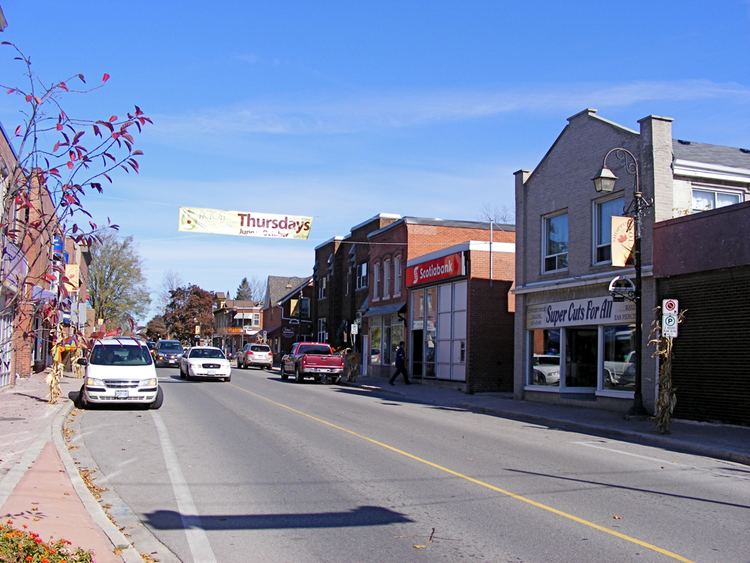Country Canada Incorporated (village) 1874 Elevation 350 m | Founded 1828 Erected (town) 1950 Local time Wednesday 8:43 PM | |
 | ||
Weather 2°C, Wind W at 37 km/h, 85% Humidity | ||
Acton (population 9,704) is a community located in the Town of Halton Hills, in Halton Region, Ontario, Canada. At the northern end of the Region, it is on the outer edge of the Greater Toronto Area.
Contents
- Map of Acton ON Canada
- History
- Significance of tanning 1844 1986
- Actonite or Actonian
- Sports teams and clubs
- Geography
- Transportation
- Media
- Library
- Notable Actonians
- References
Map of Acton, ON, Canada
History
Acton was first named Danville when Settler Wheeler Green opened a dry-goods store in 1828. It was later called Adamsville, after three settlers from a family of that name. In 1846, the postmaster named the community after the area of Acton in West London, England.
Originally part of Esquesing Township, Acton was a station on the Grand Trunk Railway with a population of 700 by 1869. The principal trade was in grain, lumber, cordwood, leather and hops. Land averaged from $28 to $35 per acre.
Acton was incorporated as a village in 1874, and erected into a town in 1950.
On January 1, 1974, Acton amalgamated with the Town of Georgetown and most of the Township of Esquesing to form the Town of Halton Hills.
Significance of tanning (1844-1986)
Tanning has been an important industry in Acton since 1844, when the first tannery was established, as the area was attractive to the leather industry because of the large numbers of trees. The tannery was subsequently purchased by Beardmore & Co. in 1865, and over time became the largest tanner in Canada. It was sold to Canada Packers in 1944, and continued in operation until its closure in September 1986.
Other specialty tanners were also established in the town. In the early 20th century, Acton was the main urban community of Esquesing Township, much larger than nearby Georgetown, Ontario which now has four times the population.
Because of the extensive tanning industry that was located in the area during the 19th Century and early 20th Century, the area has earned the nickname of Leathertown.
Actonite or Actonian
It is interesting to note in older books and papers of the area that not one, but two demonyms have existed for residents of the area at the same time. Actonite was used to identify people who moved to the area, and Actonian referred to people who grew up there. The first designation now predominates, due to the influx of new residents in the 1960s, but older residents still remember it.
Sports teams and clubs
Geography
The town's location was chosen because of the good source of waterpower from the Black Creek, and the flour mill established at the beginning is still in operation today, although its source of power has changed. It is also near the watershed between the Credit River and the Grand River which is just west of the urban area, where the Blue Springs Creek begins. Acton also has Fairy Lake at Prospect Park,which is the fairgrounds for the Acton Fall Fair every September.
Transportation
Acton is located at the intersection of Highway 7 and Halton Regional Road 25. GO Transit provides bus and train service on its Kitchener corridor, with a stop at Acton GO Station.
The Grand Trunk brought train service to the area in 1856, and its station was located at Mill Street East and Eastern Avenue next to the Beardmore leather warehouse (now known as the Olde Hide House). Canadian National closed the train station in 1967, but the stop continued to serve both Via Rail and GO Trains until the 1990s. GO Train service resumed on January 7, 2013.
From 1917 to 1931, Acton was also served by the Toronto Suburban Railway, which entered into a notable dispute over a crossing with a spur line of the Grand Trunk in the town, that went all the way to the Supreme Court of Canada for resolution.
Media
Acton is covered by local newspapers and television through the following services:
Library
The Acton branch of the Halton Hills Public Library is located at 17 River Street was initially built as the community's centennial project, and was opened in 1967. It was significantly expanded in 2012.
